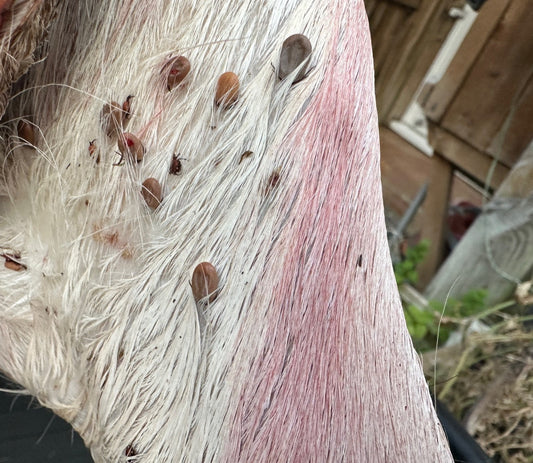In recent months, we've received more public interest than ever before regarding non-lethal alternatives to deer control, particularly in response to increased media coverage on deer welfare and woodland protection. While this conversation is welcome and necessary, the unfortunate reality is that in the South East of England, particularly with fallow deer, the scale of the problem leaves us with very few realistic options.
The fallow population in Sussex is no longer in balance with the landscape. Regeneration in many woodlands is non-existent. Ground flora has been stripped. Arable crop damage is now common, and fallow are becoming more visible, and more numerous, year on year. For these reasons, we must be clear and pragmatic: significant culling and targeted fencing remain the only practical tools available to landowners who are serious about woodland recovery and biodiversity restoration.
Why Non-Lethal Options Fall Short
Much of the public interest in alternatives focuses on deterrents, contraceptive technologies, or translocation. However, these approaches are often untested at scale, logistically complex, prohibitively expensive, or simply ineffective in open landscapes. Deterrents have little impact on habituated herds.
What we’re left with is a practical truth: if we want to restore woodland structure and achieve biodiversity targets, we must reduce the number of deer on the ground. This means effective and sustained culling programmes—focused not only on numbers but on the demographics of the herd.

Culling with Purpose: The 10:1 Ratio
At Wildscape, we work towards a 10:1 female to male cull ratio when targeting fallow deer populations. This isn’t about targeting one sex over another for ease, this ratio is grounded in herd dynamics and reproductive biology.
A single fallow buck can impregnate dozens of does during the rut. Controlling bucks alone, or equally alongside does, has little impact on overall herd growth. To influence future population trends, you must reduce the number of breeding females.
Let’s take a conservative example. Imagine a woodland holding a herd of 100 fallow deer:
Around 60 of those might be does.
Of those 60, let’s assume a typical 80% birth success rate.
That means 48 fawns added to the population each year.
Without significant culling, the herd could increase by nearly 50% in just 12 months. If left unmanaged, by year five, that same herd could exceed 250 individuals. With fallow densities like this already seen in parts of West Sussex, the urgency becomes clear. And while some estates have taken strong, early action, there are others, still relying solely on recreational stalkers, who are now struggling to keep up.
This is not to discredit the work of those recreational stalkers. Many are skilled, responsible, and committed. But recreational access alone is no longer sufficient in high-density areas. From November through to March, we need to see more boots on the ground, with the express purpose of bringing numbers down to a level where habitats can recover.
The Role of Fencing
Alongside targeted culling, fencing plays a crucial role, particularly in new planting schemes. Where budgets allow, fencing individual planting sites or perimeter blocks can give young trees the critical few years they need to establish.
This isn’t a permanent solution, fencing must be maintained, monitored and eventually adapted as woodlands develop, but it creates breathing space in areas where deer pressure is simply too high to rely on control alone.
Fencing is particularly effective when paired with a wider estate management plan. We regularly support landowners to assess browsing pressure, recommend where fencing will deliver the most impact, and help build grant-supported applications to offset installation costs under schemes like CWS1 and England Woodland Creation Offer (EWCO).
Moving Forward
What’s needed now is a coordinated and realistic approach. That means:
Estate-led culling strategies with clear annual targets.
More collaboration between neighbouring landowners.
Investment in trained professionals who can deliver consistent results.
Strategic use of grant funding to support fencing and plan development.
Without this, woodland regeneration will continue to fail. Biodiversity losses will accelerate. And the costs, both ecological and financial will only increase.
We understand that conversations around culling can be difficult. But they must also be honest. Fallow deer are shaping our landscapes more than any other species. If we want to protect the habitats we claim to value, and the wildlife they support, we cannot shy away from managing deer populations properly.
If your estate is struggling with fallow pressure or unsure where to begin, we can help. Wildscape Deer Management offers professional impact assessments, cull plans, grant support and ongoing management. The tools are there. The time to act is now.






